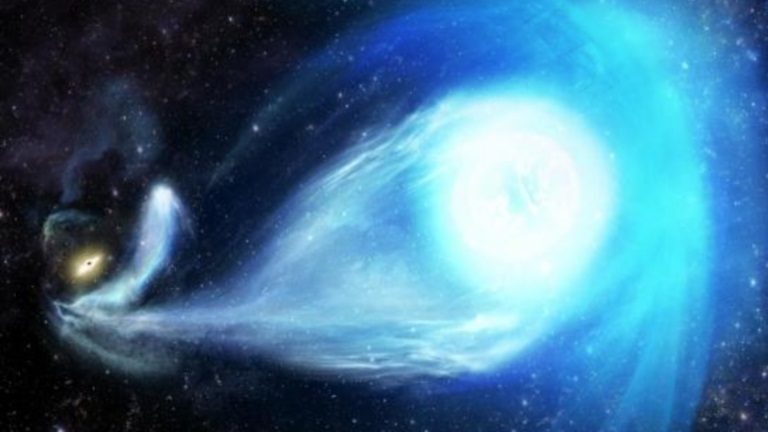
The team led by Sergey Koposov of Carnegie Mellon University's McWilliams Center for Cosmology spotted the star, known as S5-HVS1, in the Crane-shaped constellation Grus some five million years after it was unceremoniously fired from our galaxy, never to return.
"The velocity of the discovered star is so high that it will inevitably leave the galaxy and never return," Douglas Boubert, a researcher at the University of Oxford and co-author on the study, explained.
The star was spotted some 29,000 light-years away from Earth, travelling at a speed roughly ten times faster than most stars in our galaxy. The immense speed at which it is travelling was created by the interaction between a binary-star system and the black hole at the center of the galaxy, also known as the Hills mechanism.
Sagittarius A*, the black hole at the center of the Milky Way, is roughly four million times the mass of the Sun, thus basically a super heavyweight in celestial terms, meaning it packs quite a punch - enough to launch an entire star at almost unfathomable speeds out of our galaxy.
The ejection happened while humanity's ancestors were first learning to walk upright, but now researchers have stumbled across the extraordinary object while using the powerful Anglo-Australian telescope in their spare time.
"While the main science goal of S5 is to probe the stellar streams — disrupting dwarf galaxies and globular clusters — we dedicated spare resources of the instrument to searching for interesting targets in the Milky Way, and voila, we found something amazing for 'free,'" Kyler Kuehn, another member of the astronomy team, added.



Reader Comments
to our Newsletter